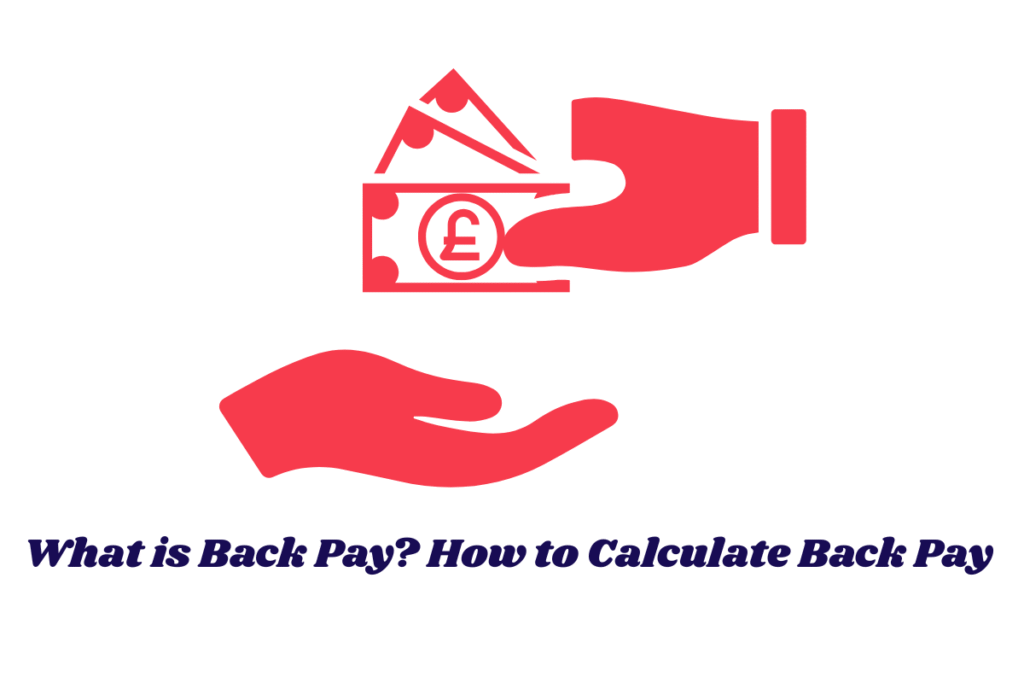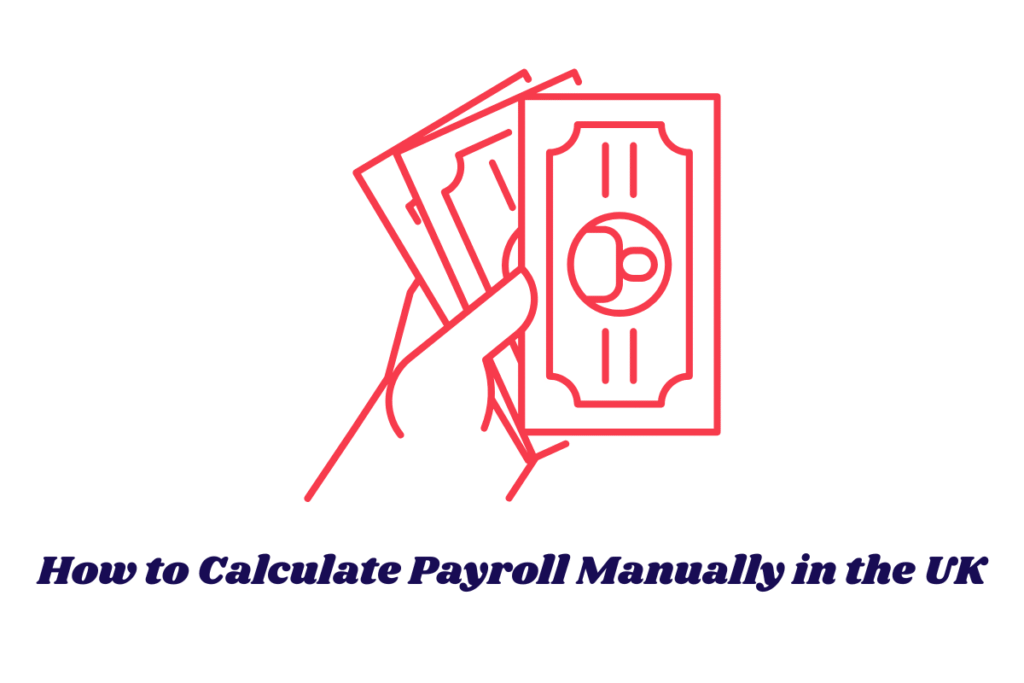Back pay is the amount of money owed to an employee when they were previously underpaid or not paid at all for work already completed. In the UK, back pay is a legal requirement under the Employment Rights Act 1996, ensuring employees receive the full wages they are entitled to.
It can arise from payroll errors, miscalculated overtime, or delayed pay increases. Employers must correct these discrepancies promptly, often guided by HMRC regulations and payroll audits. For workers, receiving back pay restores financial fairness and compliance with statutory pay obligations, reinforcing trust between employees and employers.
What is Back Pay?
The term back pay, often interchangeably referred to as ‘back wages’ or ‘arrears of pay’, represents the cumulative difference between the amount of money an employee has been paid and the amount they were legally entitled to receive for a specific period of past employment.
In simple terms, what is back pay? It is money owed to an employee due to an underpayment, mistake, or dispute resolution. It corrects a financial shortfall, ensuring that the worker receives the compensation they were due under their contract of employment or by statutory law.
For instance, if an agreed pay rise was delayed by two months due to an administrative oversight, the employee is owed the difference between their old rate and new rate for those two months. This difference constitutes their back pay salary.
What Does It Mean to Receive Back Pay?
To the employee, what does it mean to receive back pay? It signifies the resolution of a pay discrepancy and the affirmation of their contractual rights. It is not a bonus or a separate type of income; rather, it is earnings that should have been paid earlier.
Receiving back pay means the employer has rectified an underpayment error, which can stem from various scenarios, including:
- Delayed Wage Increases: The most common reason. A contractual pay rise or promotion was agreed upon but not implemented in the payroll system in time.
- National Minimum Wage (NMW) or National Living Wage (NLW) Errors: The UK government regularly increases the statutory minimum wage rates. If an employer fails to adjust the pay rate immediately, the difference owed for the intervening period is back pay.
- Wrongful Classification or Miscalculation of Hours: Employees, particularly hourly workers, may be underpaid if overtime, shift allowances, or simply the total hours worked were incorrectly logged or calculated.
- Employment Tribunal Awards: If a worker successfully brings a claim for wrongful dismissal or unlawful deduction of wages, the court or tribunal may order the employer to pay back pay salary for the period the employee was out of work or underpaid.
- Contractual Disputes: Resolving disputes over holiday pay, commission structures, or contractual bonuses can result in a lump sum of back pay.
Why Back Pay is Mandatory
Under UK employment law, specifically the Employment Rights Act 1996, an employee has the right not to suffer unauthorised deductions from wages.
The failure to pay the correct amount, and subsequently the failure to provide the resulting back pay, constitutes such an unlawful deduction.
The Employer’s Obligation and Statutory Time Limits
Employers are legally obliged to pay all wages owed. This is non-negotiable. Failure to do so can result in serious repercussions, including:
- Employment Tribunal Claims: An employee can bring a claim for unauthorised deduction of wages. Under the Employment Rights Act 1996, this claim must generally be brought within three months (less one day) of the last underpayment.
- HMRC Investigations: HMRC takes a very serious view of NMW/NLW underpayment. If a business is found to have failed to pay the correct minimum wage, they will be forced to pay the back pay owed and face significant financial penalties, which can be up to 200% of the arrears.
- Breach of Contract: Failing to pay the agreed-upon back pay salary is a breach of the employee’s contract of employment, which can lead to further legal action.
The concept of what is back pay is intrinsically linked to compliance. A proactive approach, ensuring payroll systems accurately reflect all contractual changes, is the only way to minimise the risk of owing substantial sums of back pay.
When Can Employees Claim Back Pay?
There are several common situations where an employee can legally claim this in the UK:
- Delayed wage increase: If a raise was agreed but not applied promptly.
- Unpaid overtime: Overtime that wasn’t recorded or remunerated.
- Incorrect classification: An employee wrongly paid as part-time or at a lower rate.
- Minimum wage shortfalls: If an employer failed to comply with the UK National Minimum Wage.
- Wrongful dismissal: If reinstated after dismissal, workers may claim wages for missed time.
- Contract errors: Mistakes in contractual obligations such as bonuses, commissions or salary bands.
Employees can claim back pay through informal discussions or legal channels such as an employment tribunal if necessary (GOV.UK).
You can also read our more guides on Personal Tax:
What is P14 Form? For UK Employers and Employees
How Much Will I Pay Tax on my Bonus in the UK?
How to Check CIS Status in the UK ?
Highest Council Tax Bands in the UK?
How to Calculate Back Pay?
The heart of the matter for any payroll professional is answering: how to calculate back pay. The calculation process is not one-size-fits-all and depends entirely on the nature of the pay error and the employment structure (salaried vs. hourly).
While many businesses search for a simplified back pay calculator, the most reliable approach involves a structured, period-by-period manual calculation to ensure absolute accuracy.
The fundamental principle of the back pay calculator methodology is:
Step-by-Step Calculation for Salaried Employees
Salaried employees typically receive a fixed annual salary, divided into monthly payments. Back pay often arises from delayed salary increases or misclassified pay scales.
Example 1: Delayed Pay Rise (Salaried)
Let’s assume an employee, David, had his annual salary officially increased from £30,000 to £33,000 effective from 1st April. However, due to an HR delay, the new rate wasn’t implemented until his July payslip. The back pay is owed for April, May, and June, three months.
Step 1: Determine the Monthly Difference (New Gross Pay vs. Old Gross Pay)
- New Monthly Gross Salary: £33,000 / 12 = £2,750.00
- Old Monthly Gross Salary: £30,000 / 12 = £2,500.00
- Monthly Back Pay Arrears: £2,750.00 – £2,500.00 = £250.00
Step 2: Calculate the Total Back Pay
- Total Months Owed: 3 (April, May, June)
- Total Gross Back Pay Owed: £250.00 $times$ 3 months = £750.00
This £750.00 is David’s gross back pay salary before deductions. This meticulous method ensures the precise amount of what is back pay is correctly determined.
Step-by-Step Calculation for Hourly Workers
For hourly workers, back pay most often results from miscalculated hours, unpaid overtime, or failure to apply an NMW/NLW increase.
Example 2: National Living Wage (NLW) Underpayment (Hourly)
An employee, Sarah, is 25 and should have been paid the NLW of £11.44 per hour (current as of April 2024), but was mistakenly paid the previous year’s rate of £10.42 per hour for a four-week pay period in April. She worked 150 hours during this period.
Step 1: Determine the Hourly Difference
- Correct Hourly Rate: £11.44
- Incorrect Hourly Rate Paid: £10.42
- Hourly Back Pay Arrears: £11.44 – £10.42 = £1.02 per hour
Step 2: Calculate the Total Back Pay
- Total Hours Worked: 150 hours
- Total Gross Back Pay Owed: £1.02 $times$ 150 hours = £153.00
In this case, the back pay calculator is simply determining the time-weighted difference. The answer to what is back pay here is the specific hourly deficit multiplied by the total hours affected.
Example 3: Unpaid Contractual Overtime (Hourly)
If Sarah also worked 10 hours of overtime, which should have been paid at 1.5 times her correct hourly rate (£11.44), but was paid at 1.5 times the incorrect rate (£10.42):
Step 1: Determine the Overtime Rate Difference
- Correct Overtime Rate: £11.44 $times$ 1.5 = £17.16 per hour
- Incorrect Overtime Rate Paid: £10.42 $times$ 1.5 = £15.63 per hour
- Overtime Hourly Back Pay Arrears: £17.16 – £15.63 = £1.53 per hour
Step 2: Calculate the Total Back Pay for Overtime
- Total Overtime Hours Owed: 10 hours
- Total Gross Overtime Back Pay Owed: £1.53 $times$ 10 hours = £15.30
The Tax & National Insurance Implications of Back Pay
For the employee, understanding what does it mean to receive back pay? hinges heavily on the net amount they receive. I must stress that back pay is treated as normal earnings and is therefore subject to the usual Pay As You Earn (PAYE) income tax and National Insurance Contributions (NICs).
Crucially, back pay is taxed in the period it is paid, not the period it was earned. This has significant implications for both the employer and the employee.
The Timing of Tax and NIC Deductions
When an employer processes a lump sum of back pay, they must follow standard HMRC payroll procedures:
- PAYE Income Tax: The gross back pay is added to the employee’s other taxable earnings for the current pay period. The total is then subject to the employee’s current tax code and the appropriate tax bands (20%, 40%, or 45%) with HMRC payroll guidance.
- National Insurance Contributions (NICs): The gross back pay is also subject to Class 1 NICs (employee and employer contributions) based on the current pay period’s National Insurance thresholds.
Potential Tax Consequences for the Employee
While the employer must pay tax and NICs based on the pay date, this can sometimes push an employee into a higher tax bracket for that specific month, leading to a much larger deduction than anticipated.
- Personal Allowance Impact: If a large amount of back pay salary is paid in one lump sum, the employee’s personal tax allowance for that period might be exhausted quickly, leading to more tax being deducted.
- Higher Rate Tax Jump: A significant payment of back pay could temporarily push a basic rate (20%) taxpayer into the higher rate (40%) tax band for that month, resulting in a higher effective tax rate on the back pay itself.
The HMRC ‘Overriding’ Mechanism
In cases where a lump sum of back pay relates to a previous tax year, the employee may be able to claim a refund if the lump sum pushed them into a higher tax bracket unfairly.
However, the initial burden is on the employer to calculate the PAYE correctly based on the date of payment. The employee is ultimately responsible for ensuring their tax liability is correct for the entire tax year, which is why an end-of-year review or self-assessment might be necessary for large back pay payments.
How Does Back Pay Appear on a Payslip?
To ensure transparency, it should must appear as a separate line item on an employee’s payslip. It is usually labelled clearly, such as “Back Pay March 2025” or “Pay Adjustment”. See GOV.UK – Payslips
The payslip should show:
- Gross back pay amount
- Applicable tax and National Insurance deductions
- Updated year-to-date (YTD) totals
For example:
| Description | Amount |
| Basic Salary | £2,200.00 |
| Back Pay – Feb 2025 | £250.00 |
| Tax | -£380.00 |
| NI | -£180.00 |
| Net Salary | £1,890.00 |
Want to know how much you might be owed in back payments? 👉 Use our PIP Back Pay Calculator to estimate your entitlement in seconds.
The Back Pay Calculator Principle: Tools and Accuracy
While the step-by-step methodology outlined in Section 3 is the gold standard for accuracy, the proliferation of digital payroll tools means that the function of a back pay calculator is often integrated into professional payroll software.
A good payroll system acts as a sophisticated back pay calculator by:
- Recording Historical Rates: Storing all previous pay rates and contracted hours for all employees.
- Period-Specific Comparison: Allowing the payroll administrator to input the correct rate and the incorrect rate for a specified date range.
- Automatic Tax Adjustment: Applying the tax and NIC calculations based on the pay date, while providing detailed historical records for reconciliation.
No automated back pay calculator can correctly interpret complex tribunal rulings, adjust for negotiated settlements, or determine if commission or bonus calculations were part of the underpaid amount.
A manual review is always necessary to ensure the calculation of what is back pay salary is complete and fair.
Avoiding Future Arrears: Best Practice for UK Payroll
To prevent the need for a back pay calculator in the first place, businesses must adhere to these best practices:
- Timely Contractual Amendments: Ensure all pay reviews, promotions, and contract changes are processed before the next payroll cut-off date.
- Systematic NMW/NLW Updates: Mandate that payroll systems are updated immediately following the Chancellor’s announcement of new minimum wage rates, which typically change every April.
- Clear Timesheet Policies: Implement clear, audit-proof systems for logging all hours, especially overtime, ensuring a clear record of what is back pay should an issue arise.
The Employee’s Recourse: What to Do If Back Pay is Withheld
When an employee discovers what is back pay they are owed, the employer is legally bound to pay it. However, if an employer refuses, the employee has defined legal avenues for recourse, underpinning of the UK legal framework.
Internal Resolution
The first step is always formal internal communication. The employee should:
- Raise a Grievance: Submit a formal written grievance detailing the owed back pay salary amount, the period it covers, and the basis for the claim (e.g., delayed pay rise, NMW/NLW underpayment).
- Provide Evidence: Include any documentation, such as appointment letters, signed contracts, or tribunal rulings, that definitively answers what does it mean to receive back pay? in their situation.
External Mediation and Legal Action
If the internal grievance fails to resolve the issue of unpaid back pay, the next steps are external:
- ACAS Early Conciliation: The Advisory, Conciliation and Arbitration Service (ACAS) offers a free and mandatory Early Conciliation service before an employee can take a claim to an Employment Tribunal. ACAS aims to resolve the dispute, often negotiating the payment of the owed back pay.
- Employment Tribunal Claim: If conciliation fails, the employee can submit a claim for “unlawful deduction of wages.” If successful, the Tribunal will issue a declaration and order the employer to pay the outstanding back pay salary.
It is essential to remember that failure to pay an agreed or legally mandated sum of back pay can severely damage an employer’s reputation and lead to significant legal fees, making prompt payment the most prudent course of action. The question of what is back pay always comes back to legal compliance.
Time Limit to Claim Back Pay in the UK
Employees generally have three months less one day from the date of the underpayment to lodge a claim with an employment tribunal. However, if the issue spans several payments (e.g. repeated underpayment), they may claim for a series of deductions.
To avoid legal complications, it’s best for employers to handle all pay disputes swiftly and document everything.
Final Thoughts
For any business operating in the UK, understanding what is back pay is fundamental to good governance and employee relations. By approaching this topic with the expertise of a seasoned accountant and the trustworthiness of a transparent employer, businesses can navigate this financial complexity smoothly.
While payroll mistakes can happen, what truly matters is how they’re handled. Transparent communication, timely payments, and proper accounting are vital for employee trust and legal compliance.
Employers should invest in reliable payroll systems, conduct regular audits, and provide training to avoid future back pay issues. Likewise, employees should regularly review their payslips and raise concerns early.
The content provided on TaxCalculatorsUK, including our blog and articles, is for general informational purposes only and does not constitute financial, accounting, or legal advice.
You can also visit HMRC’s official website for more in-depth information about the topic.


